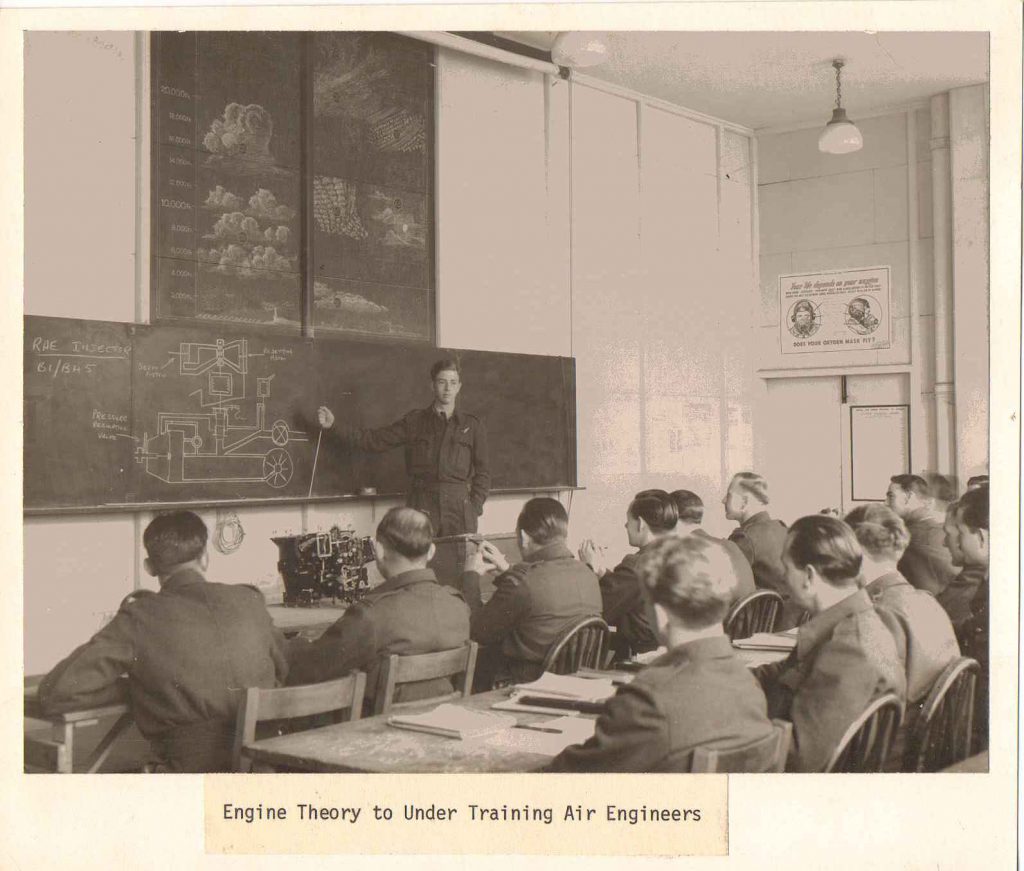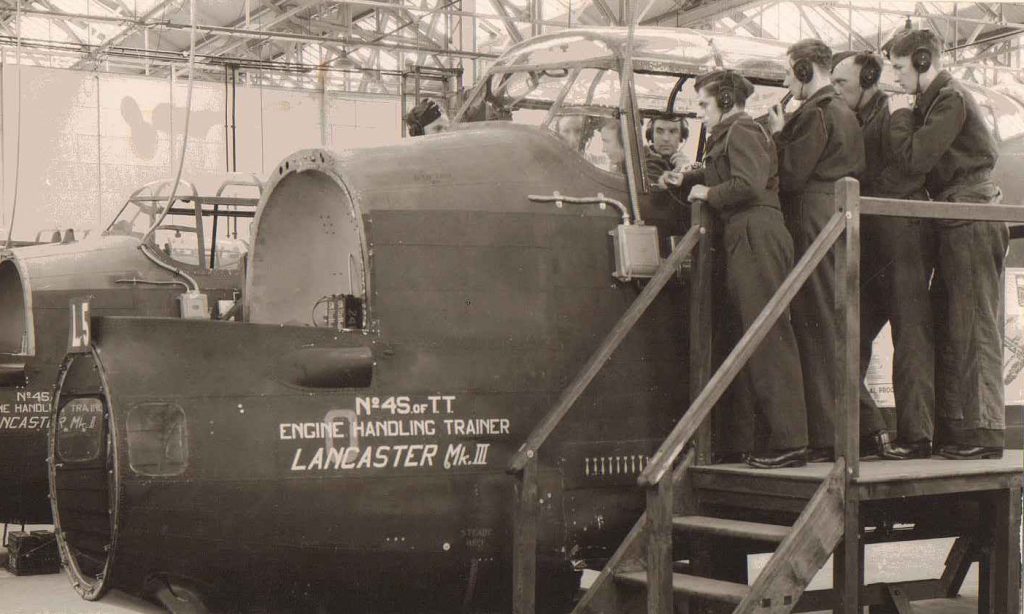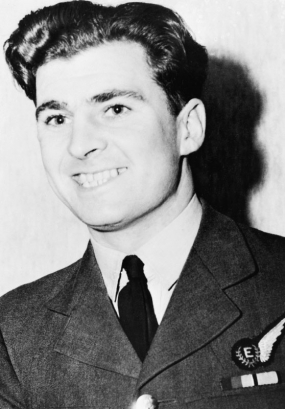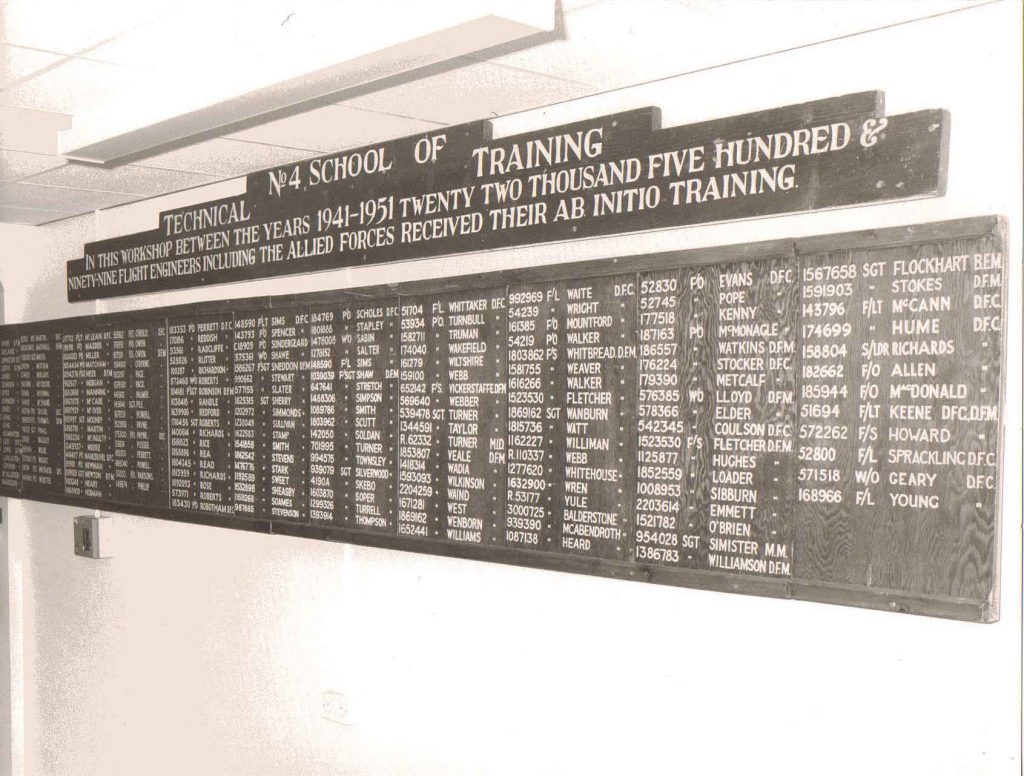
In spring 1942. Bomber Command dispensed with co-pilots under a term called ‘New Deal’. The Flight Engineers sphere of responsibility was expanded to cover this area. The change took over a year to implement fully on existing aircraft but it was actioned straight away on the new Avro Lancaster which had entered service in large numbers. The first Lancaster engineers were trained under the existing scheme. Sgt. Tommy Clarkson completed the 3 week Air gunnery course at Walney Island, Barrow-in-Furness in May1942, spent 2 weeks at Avros and a similar period with Rolls-Royce and after a short leave joined No. 49 squadron.
By early 1942 some Merlin instruction had moved to the No. 4 School of Technical Training at RAF St. Athan in S. Wales; a logical move as the school trained all the RAF’s engine tradesmen. In April 1942 the shape of the proposed RAF training course was finalised. The course was 6 weeks long, mainly engine based and because of this, the entire course was at RAF St. Athan. It should be remembered, that there were already many Flight Engineers in operational flying duties with the Royal Air Force.

The first course at St Athan commenced on 30 May 1942 and comprised 60 trainees following a syllabus which had only been drawn up in April! The Initial 2 courses were of 3 weeks duration, the following 2 of 4 and 5 weeks duration and the fifth and subsequent courses took 6 weeks – the planned length. The number of personnel planned for each course was 100, but fluctuated from tune to time. Some delays occurred in the Complementary Gunnery School Courses, but this requirement was dropped in mid-1943 and progress improved thereafter,
The
training of Engine Fitters and Mechanics had been underway at St. Athan for
over 3 years, but Flight Engineers then became the ‘cuckoo in the nest’ and
displaced both Fitters and Mechanics by September 1942. On arrival at St Athan,
the current requirements for individual aircraft types were assessed and the
course was split accordingly, with training following on that specific type
alone: although some general tuition was also given. Throughout the war type
selection was entirely concerned with filling vacancies as they appeared, with
no attempt to match the aptitude of the man to a particular aircraft.
Air Ministry Order A707142 dated 16 July 1942 allowed direct entrants to be trained as Flight Engineers. Obviously, additional training would be required for those entrants; as a result a longer course of 24 weeks was established in 1943 when the full impact of Direct Entrant Recruitment was felt. This led at times to an output of over 500 men in one week and a total population at No. 4 SoTT of over 5,000!
This was principally aimed at replacing the very heavy aircrew losses of Bomber Command, with Coastal Command requiring comparatively small numbers. Transport Command, formed on 25 March 1943, operating Halifax and Stirling aircraft converted for glider towing and air freighting and the Avro York introduced in 1944, also required flight engineers.

In July 1943 trainees no longer had to qualify as airframe and engine fitters during the course, however, due to an increase in the failure rate, aircraft type training was increased. In the space of a year the recruitment of direct entrants changed front being undesirable to the point where it was now planned to take over.
The eligibility for internal recruitment was virtually discarded in early 1944, direct entrants took 6 months to train from scratch; ex-tradesmen 7 weeks. It was common sense to leave the skilled tradesman alone as replacing engineer losses would not take long to fill.
Ex-tradesmen were required to maintain their trade proficiency with the rest expected to work to a basic mechanic level. It was Transport Command who required regular employment of its engineers with trade type skills; regularly flying to airfields with no servicing facilities and carrying out all the refuelling, oiling and the rectifying of any defects.
Before the advent of the Air Quartermaster in1962 the Engineer had also to calculate the aircraft weight and balance. Whereas Bomber and Maritime aircraft normally carried standard loads which were easy to compute the Transport Engineer had his work cut out!

In addition, as the course of the war raged on, the ‘Second Front’ or invasion of Europe drew closer and it was anticipated that aircrew losses would increase dramatically in the months both before and after that momentous event.
Not only did all RAF (British) Flight Engineers qualify at St. Athan but also Australians. Canadians, Rhodesians. Poles. Czechs. Belgians, Free French and Dutch.
Early in 1944 St Athan could not cope with the sheer volume of training required and the Engineers’ course was split into two. with the first 10 weeks being given to No.5 SoTT at RAF Locking; St. Athan completing the last 7 weeks followed by type training. The first course at Locking commenced on 17 February 1944 and the last finished in the winter of 1944i5. Possibly as early as November 1944.
A reduction of Flight Engineer Training requirements in 1944 came with the decision of the Royal Canadian Air Force to train its own Flight Engineers. By this time it was also realized that D-Day losses were much less than had been feared.
As the war moved to its close in the early months of 1945, the numbers at St Athan dwindled to almost zero, but training did not entirely cease. By the end of the war over 22,500 Flight Engineers had graduated from the School yet an estimated 10.000 had died.

Their bravery and dedication was recognised by the awarding of a Victoria Cross and more than 350 Distinguished Flying Crosses/Medals. Flight Engineers saw active service in all operational commands and on every front.
Norman Jackson was the only Flight Engineer awarded the Victoria Cross, one of ten awarded to crew members of Lancasters, a record not achieved by any other aircraft type.
The period from 1942 until D-Day in 1944 was the peak of Flight Engineer Training with, at times, 500 qualifying and leaving RAF St. Athan weekly.
